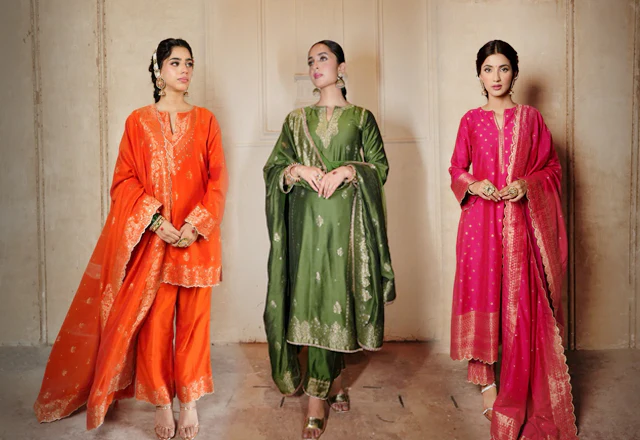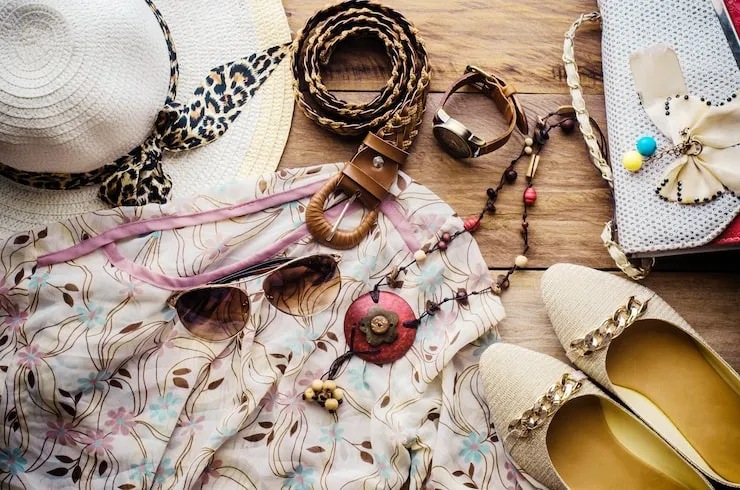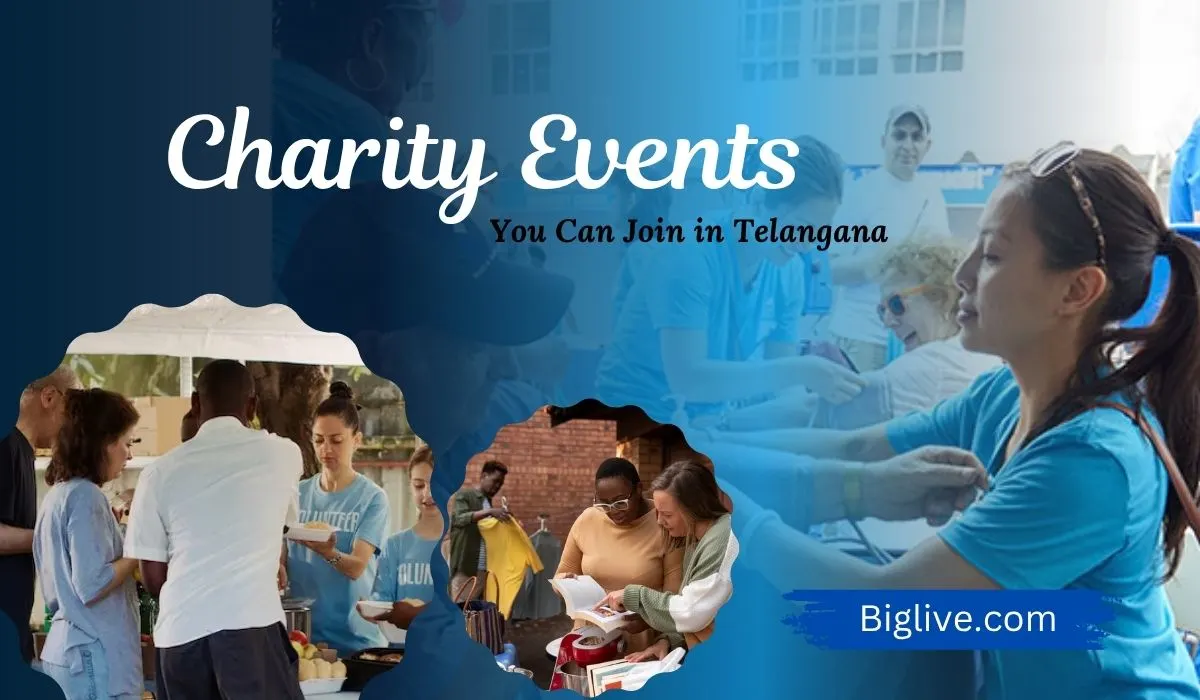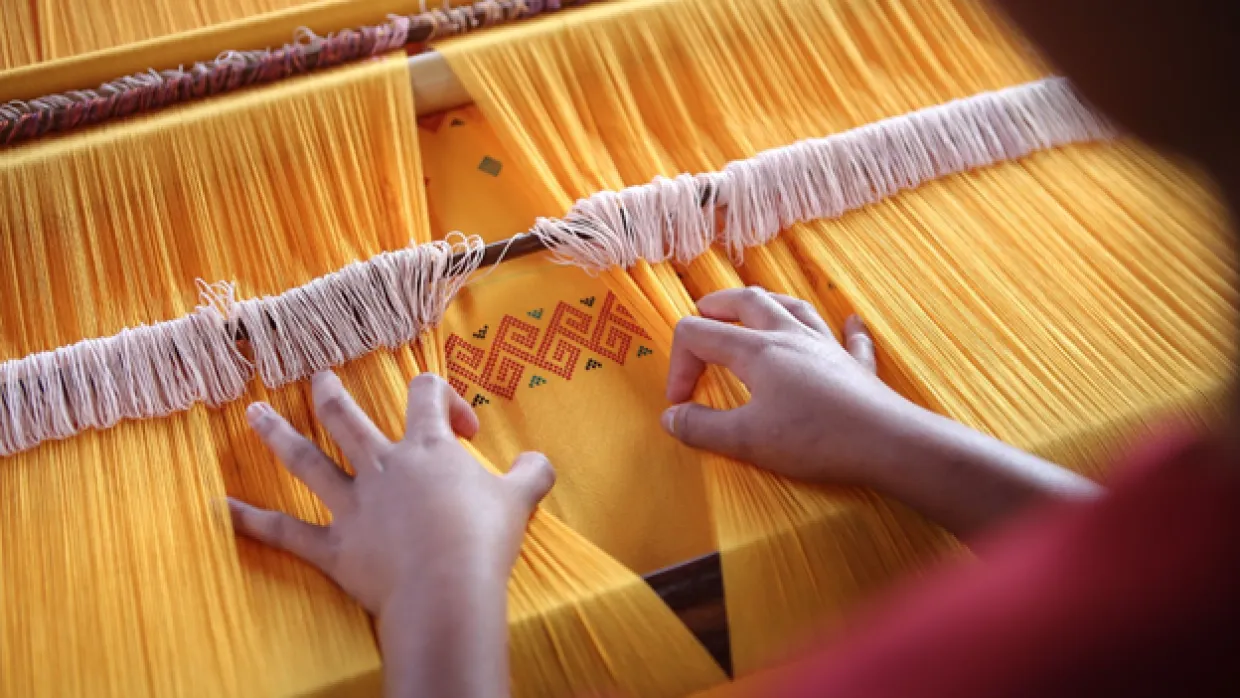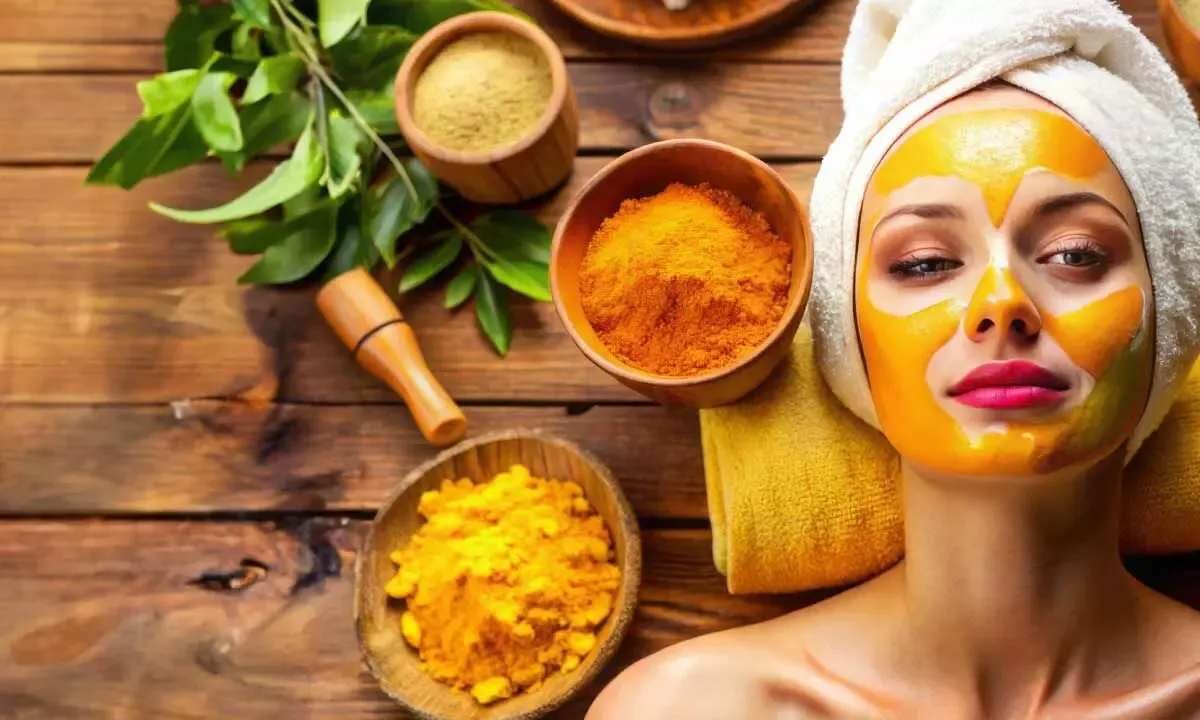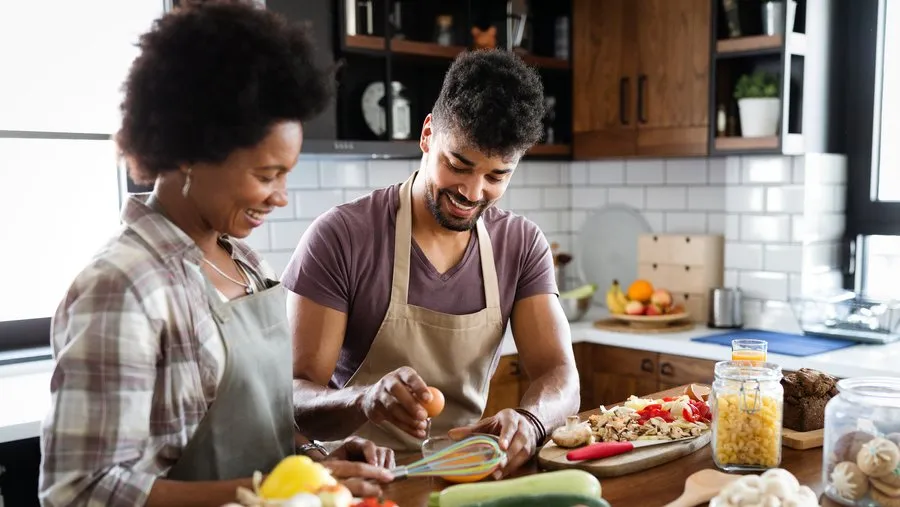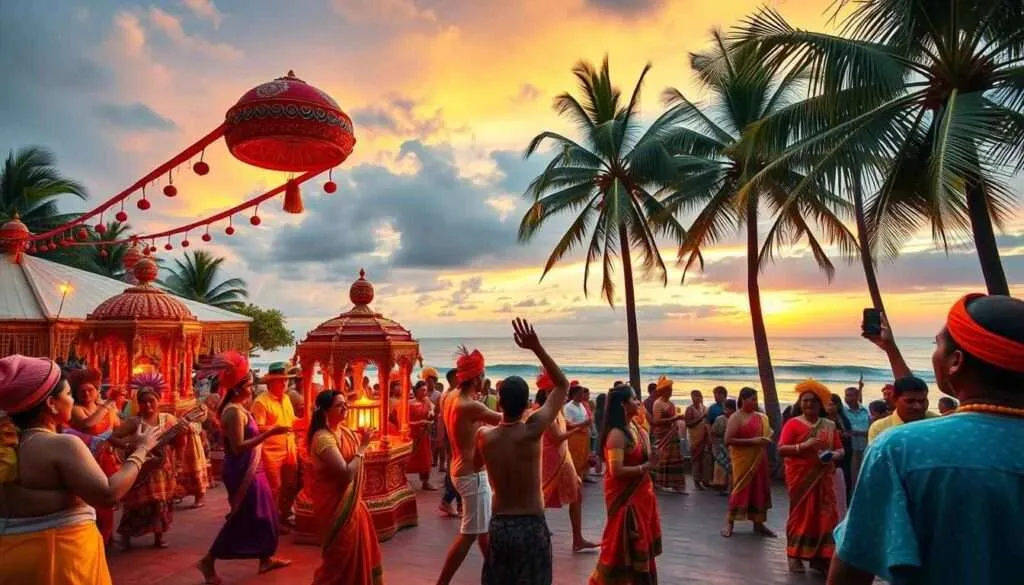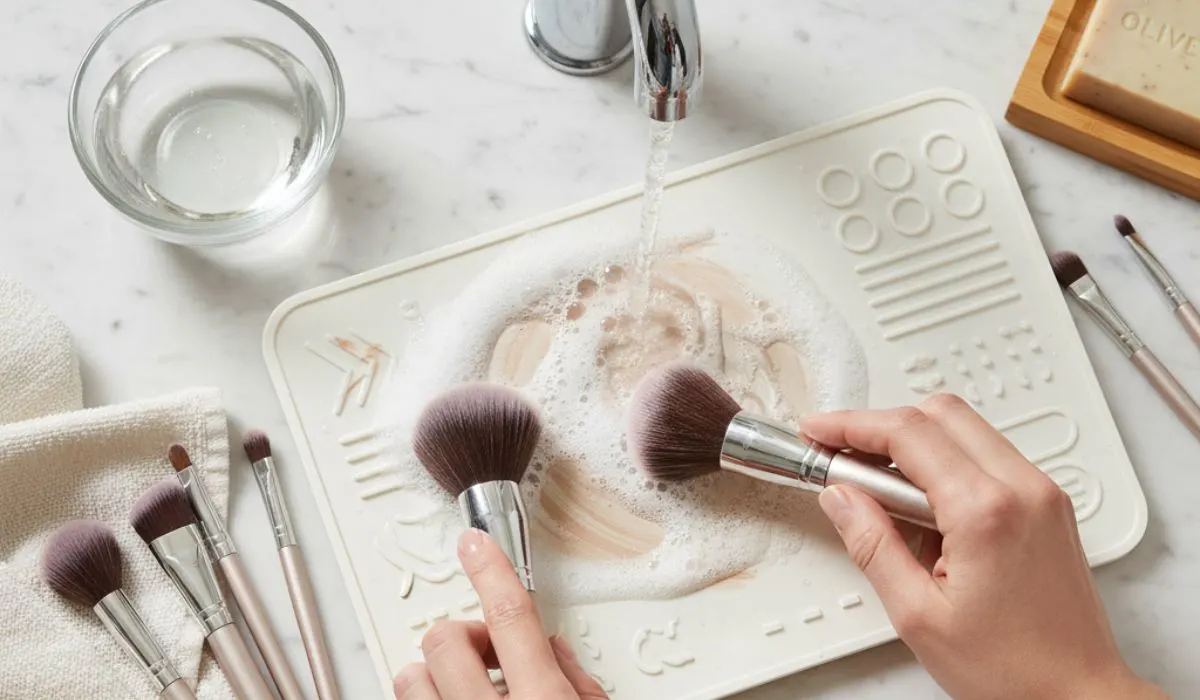In India, fashion and festivals go hand in hand. With every passing season and celebration, wardrobes across the country undergo vibrant transformations.
From the rich silks of Diwali to the breezy whites of Holi, Indian festivals have a profound impact on what people wear and when they wear it. In this blog, we explore how Indian festivals influence seasonal fashion trends, turning traditional celebrations into powerful fashion moments.
1. The Deep Connection Between Culture and Clothing
In Indian culture, clothing is not just about style—it’s about symbolism, tradition, and mood. Each festival carries unique cultural significance, and fashion becomes an extension of that sentiment.
Whether it's the bold reds of Karva Chauth, the elegant whites of Janmashtami, or the bright yellows of Basant Panchami, color and textile choices during festivals are rarely accidental. They follow seasonal shifts, religious customs, and regional preferences, often setting the tone for mainstream fashion trends throughout the year.
2. Spring Festivals and Light, Bright Fashion
Holi: Color, Play, and Cotton
Holi, the festival of colors, is celebrated in early spring and sets the tone for comfortable, breathable fashion. Traditional white kurtas and churidars made from cotton or linen are staples, allowing the vibrancy of the colors to stand out.
Holi-Inspired Trends:
-
Revival of white-on-white ensembles.
-
Tie-dye and splash-print outfits.
-
Organic cottons and handwoven fabrics for everyday wear.
Basant Panchami: Yellow and Joyful
Celebrated at the beginning of spring, Basant Panchami honors Saraswati, the goddess of wisdom. People traditionally wear yellow to symbolize prosperity and positivity.
Trend Impact:
-
Yellow kurtas, sarees, and Indo-western tunics often trend on fashion runways.
-
Designers introduce pre-summer collections in sunny palettes.
3. Summer Festivals and Minimalism
Eid-ul-Fitr: Elegant Layers in Lightweight Fabrics
Eid follows the month of Ramadan and often coincides with hot Indian summers. Fashion during this time focuses on modesty and elegance, with men and women donning chikankari kurtas, pastel shararas, and light dupattas.
Trend Impact:
-
Rise in demand for pastel hues, organza, and chikankari embroidery.
-
Elegant monotone sets and modest glam influencing summer ethnic wear.
Rath Yatra and Regional Simplicity
In Odisha and other eastern states, Rath Yatra is marked by traditional handloom sarees in breathable fabrics like cotton and jute blends.
Fashion Insight:
-
Sambalpuri sarees and Ikat prints see increased popularity.
-
Designers showcase regional craft in their summer lines.
4. Monsoon Festivals: Romance and Vibrancy
Raksha Bandhan: Sibling Love in Style
Falling in the monsoon season, Raksha Bandhan is often a day for experimenting with fusion wear and semi-formal ethnic outfits. While comfort is key due to the humidity, style remains essential.
Trendy Choices:
-
Flowy anarkalis, chikankari suits, and printed lehengas.
-
Pastels, florals, and statement earrings top the trend charts.
Janmashtami: Ethereal Whites and Golds
Janmashtami, celebrating Lord Krishna's birth, inspires delicate whites, off-whites, and creams with golden embellishments.
Impact on Trends:
-
Return of handloom whites with temple borders.
-
Minimal gold jewelry and krishna-inspired motifs in prints and accessories.
5. Autumn Festivals: The Beginning of Grand Festive Fashion
Ganesh Chaturthi: Ethnic Glam
As the festive season kicks off, Ganesh Chaturthi brings a mix of traditional Maharashtrian styles and modern ethnic fusion wear. The nauvari saree, Paithani silks, and kurta sets dominate fashion choices.
Style Trends:
-
Embellished blouses, brocade dupattas, and handcrafted jewelry gain traction.
-
Maharashtrian motifs inspire broader design aesthetics in autumn collections.
Navratri and Durga Puja: Nine Nights of Fashion
These festivals are a fashion marathon—each day demands a new color and a new outfit.
In Gujarat (Navratri):
-
Mirror work chaniya cholis, kedia tops, and oxidized jewelry.
-
The trend of fusion Garba outfits like crop tops with lehengas.
In Bengal (Durga Puja):
-
Red-and-white sarees on Ashtami, traditional taant sarees, and gold jewelry.
-
Rise in handloom saree appreciation and minimalist gold accessories.
Trend Outcome:
-
Designers often release Navratri/Durga Puja capsule collections.
-
Color-based fashion calendars influence fast fashion and e-commerce.
6. Winter Festivals: Rich Fabrics and Wedding-Ready Looks
Diwali: The Peak of Ethnic Glamour
The festival of lights sees the highest level of fashion innovation. From heavily embroidered lehengas to silk sarees, Diwali sets the tone for both wedding season and luxury ethnic fashion.
Trend Highlights:
-
Velvet, silk, brocade, and metallic hues dominate.
-
Indo-Western fusion outfits like jacket lehengas and cape dupattas trend widely.
-
Jewel tones like emerald green, royal blue, and deep maroon become seasonal favorites.
Karva Chauth & Bhai Dooj: Romantic Reds and Family Traditions
These smaller festivals, while intimate, strongly influence bridal and wedding fashion.
Key Elements:
-
Return of classic reds, golds, and maroons.
-
Popularity of minimal mehendi-style outfits and heavy embroidered sarees.
-
Designers launch pre-wedding capsule wardrobes inspired by these festivals.
7. How Festivals Influence Fashion Retail and E-Commerce
Indian fashion houses and e-commerce platforms like Myntra, Nykaa Fashion, and Ajio align their marketing and inventory cycles with festivals. Here’s how:
-
Festival Collections: Most brands launch capsule collections for major festivals like Diwali, Eid, and Navratri.
-
Flash Sales & Style Guides: Platforms push curated looks via email campaigns and “Shop the Look” features.
-
Color-Driven Searches: Search terms like “yellow kurti for Basant Panchami” or “red saree for Karva Chauth” spike in volume around relevant times.
8. Celebrity Influence and Social Media Trends
Bollywood celebrities and influencers also play a major role in shaping festival fashion:
-
Instagram reels and YouTube videos showcase "Get Ready With Me" (GRWM) looks for each festival.
-
Designers like Sabyasachi, Manish Malhotra, and Anita Dongre promote signature festive pieces through celeb endorsements.
-
#FestiveFashion, #DiwaliLookbook, and #NavratriOOTD trend heavily every season.
9. Traditional Meets Sustainable
With the rise of conscious consumerism, festival fashion has also become more sustainable:
-
Re-wearing heirloom sarees with modern blouses.
-
Renting lehengas instead of buying.
-
Choosing handwoven fabrics like Chanderi, Maheshwari, and Khadi.
Many new-age designers are now promoting slow fashion during the festive season to counter the "wear-once-and-forget" culture.
Conclusion: Festivals as Fashion Catalysts
In India, festivals are not just about rituals—they're also about expression, celebration, and storytelling through fashion. Each season brings its own palette, fabric, and silhouette preferences shaped by centuries-old traditions and ever-evolving tastes.
From the streets to the runways, Indian festivals continue to inspire seasonal trends that influence not only traditional wear but also fusion and contemporary styles. Whether you're dressing up for Diwali or picking the perfect lehenga for Navratri, you're participating in a larger cultural movement—where fashion becomes both timeless and timely.



